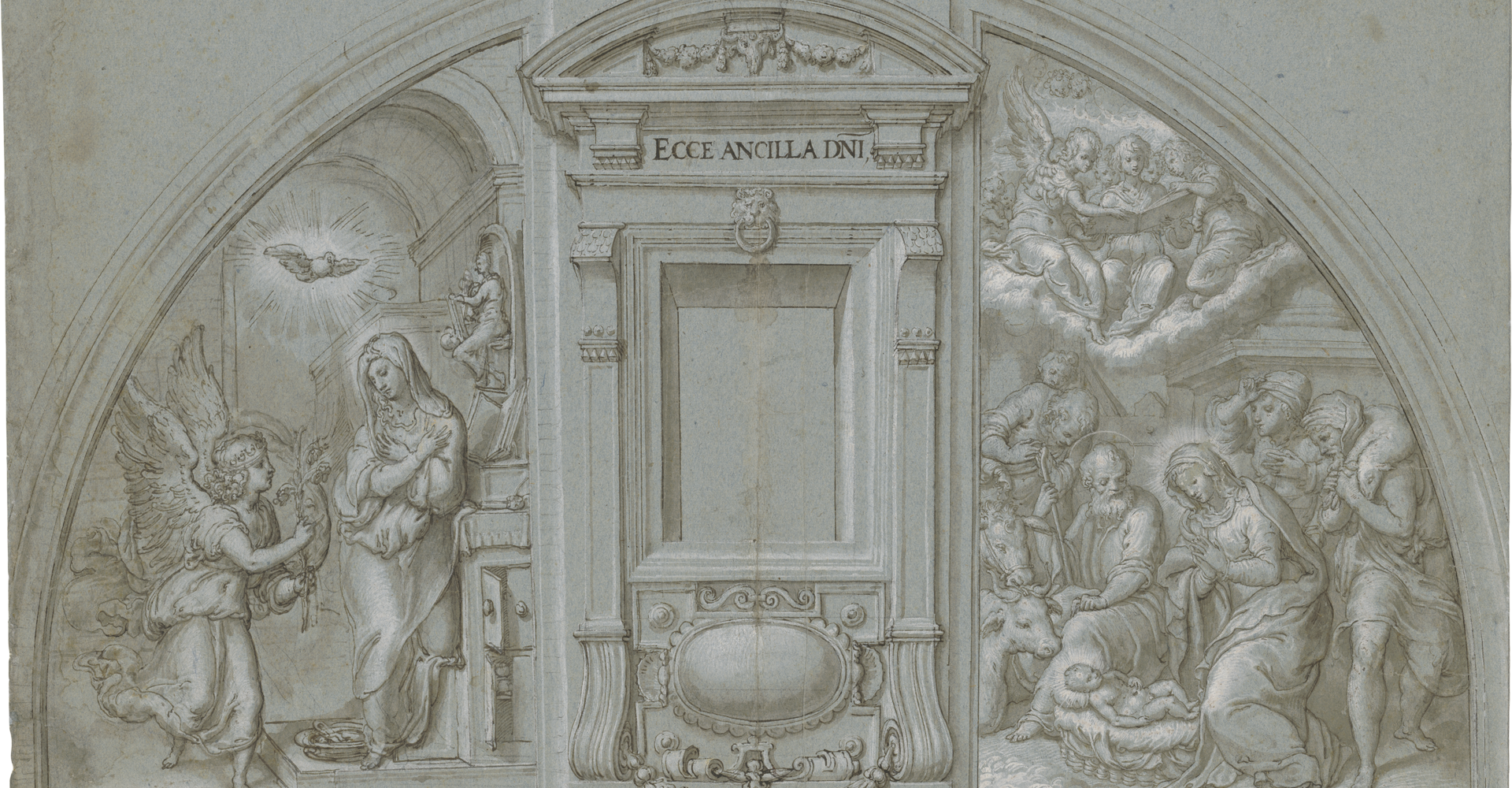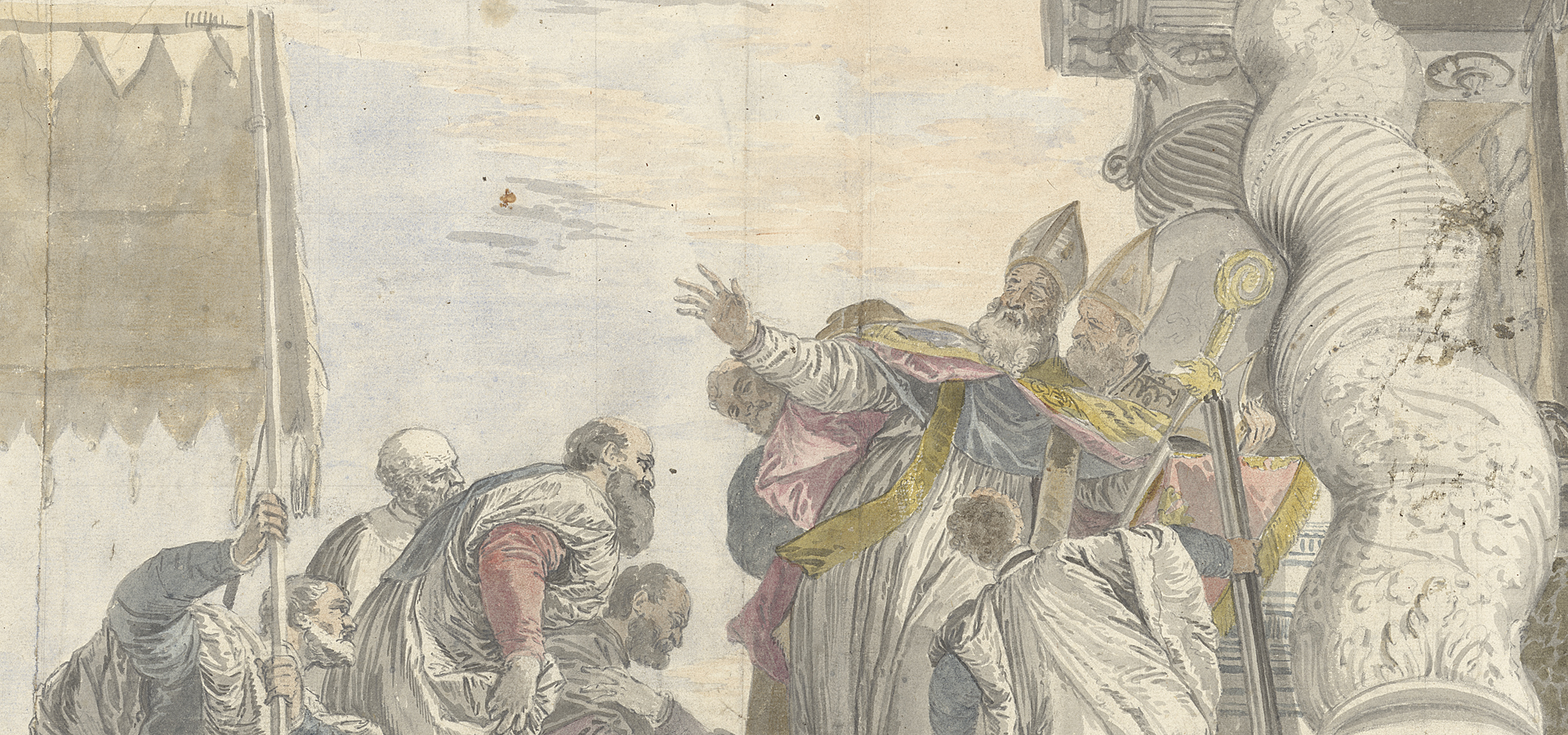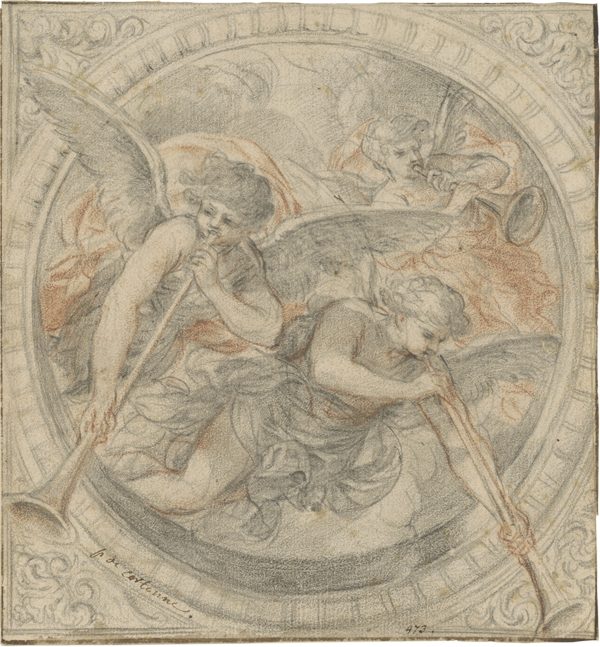IN FOCUS: HEAVEN ON EARTH. DRAWINGS TO ITALIAN WALL AND CEILING PAINTINGS
THE EXHIBITION
Wall and ceiling paintings had their heyday in the Late Renaissance and Baroque periods. Within this context drawings fulfilled the most varied of functions. Many sheets were created before the completion of the fresco and are part of the work process; others were executed after the pictures were finished. The 27 works shown in the cabinet corridor range from the first sketched ideas to studies of figures and from accurately elaborated sections of drafts to complete compositional drawings.
Planning your visit
Open today till 6.00 pm
Daily 10.00 – 18.00
Thursday 10.00 – 20.00
Monday closed
Barer Straße 40
80333 München
Sunday admission 1€
Thursday – Saturday 10€
reduced 7€
Day pass (Alte Pinakothek, Pinakothek der Moderne, Museum Brandhorst, Sammlung Schack) 12€

276 x 261 mm, Inv.-Nr. 34025 Z © Staatliche Graphische Sammlung München
In Late Renaissance and Baroque
frescoists often did not simply keep to given architectural features but reinterpreted these in their wall and ceiling paintings. In this way a wall painting could give the impression that an interior space was open to the outside or that a dome revealed a view of the heavenly spheres. Studies made after such pictorial inventions honour the compositions. They were often made by artists on their travels who wanted to take a collection of motifs back home with them or were commissioned by collectors who sought to gain an impression of illusionist concepts that, not infrequently, had become well known. Several of these sheets are of paintings that have since been lost and are of great documentary value. Others served as preliminary drawings for reproduction as prints, in the case that no drawings made during the preparatory stages of a work were available.

weiß gehöht auf blaugrauem Papier, 340 x 540 mm, Inv.-Nr. 2721 Z © Staatliche Graphische Sammlung München
Drawings created as part of the work process
on the other hand, trace an artist’s path to a pictorial invention and the search for new, compelling solutions. Many depictions – in the shape of pendentives or lunettes, for example – simultaneously indicate the correlation between a projected painting and the architecture. Among the art forms of the time this is the sovereign force to which sculpture, painting and ornament were subordinate.
The exhibition includes sheets by Federico Zuccari and Annibale Carracci, from Pietro da Cortona, Giovanni Lanfranco, Giovanni Battista Gaulli and several other famous frescoists.





